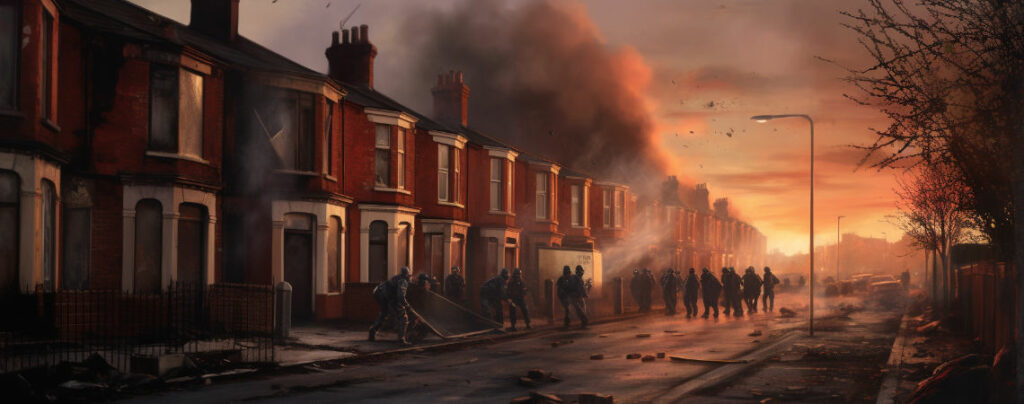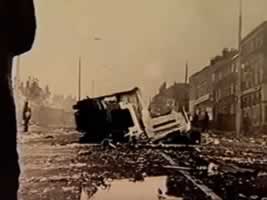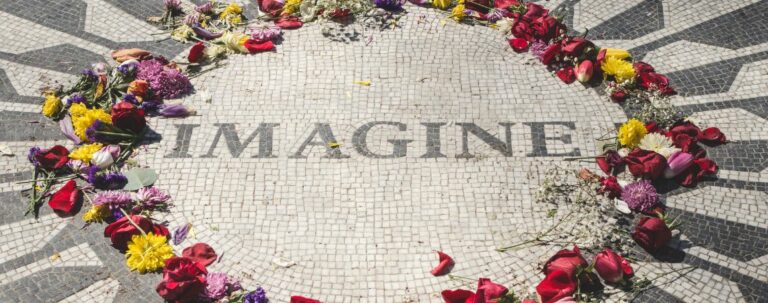
Supercars of the 80s – Ferrari Testarossa
Step back into the 80s with the iconic Ferrari Testarossa, the symbol of style and speed that defined a decade

The year 1981 remains an indelible one in the annals of British history, marked notably by a series of violent city riots that erupted across England. These disturbances, fuelled by a volatile combination of socio-economic grievances, racial tensions, and dissatisfaction with policing, provided a dramatic expression of discontent within sections of urban society.
Britain was undergoing a period of profound transformation. The post-war economic boom had given way to recession, and the Thatcher government’s austerity measures led to widespread job losses and deepened socio-economic inequality. Inner city areas, often characterized by high levels of unemployment and poverty, were particularly impacted.
Against this backdrop, the confrontations began in Brixton, South London, in April. The arrest of a black man under suspicion of stabbing another black man ignited simmering community tensions. Over the course of three days, the area witnessed widespread rioting, looting, and arson, while confrontation between the police and local community escalated. This unrest, later termed the ‘Brixton Riots’, exposed deep-seated issues around racial profiling and discriminatory policing, particularly the controversial ‘stop and search’ policy known as ‘Operation Swamp’.
The Brixton riots served as a kind of flashpoint, with further disturbances occurring in areas of cities like Bristol, Birmingham, Leeds, Liverpool, and Manchester.
The Toxteth riots in Liverpool were among the most significant, lasting nine days in July and leading to extensive property damage and a considerable number of injuries. After a death, 500 arrests and up to one thousand police injured, UK Police used CS Gas on citizens for the first time on the British mainland.
The disturbances in Moss Side, Manchester, and in the Handsworth area of Birmingham further underscored the gravity of the issues.

The riots were largely caused by a combination of social deprivation and distrust of the police and authority.
Most of the riot districts had large ethnic minority communities.
The magnitude of these events spurred the government to commission a public inquiry. Lord Scarman, a respected judge, was tasked with investigating the causes of the riots. His report, published later in 1981, acknowledged the role of racial discrimination and socio-economic disadvantage in fuelling the disturbances. He made a number of recommendations around policing, race relations and urban policy, though views on their subsequent implementation and impact vary.
What are your memories of 1981 Riots? Share them in the Comments section below.

Step back into the 80s with the iconic Ferrari Testarossa, the symbol of style and speed that defined a decade

Take a trip down memory lane with these 20 iconic board games and toys that defined our 1980s childhood in the UK.

Immerse yourself in nostalgia with this collection of iconic 1980s UK TV adverts – a true blast from the past!

Tina Turner, the Queen of Rock ‘n’ Roll, whose life and career became a symbol of resilience and triumph, has left an enduring legacy

Uncover the Top 10 UK TV Villains of the 1980s: A journey through the most notorious and memorable antagonists of the decade

1980 saw the first CND rallies, the Alton Towers theme park opening and the murder of John Lennon in New York. The Moscow Olympics was the sport highlight.
No Events